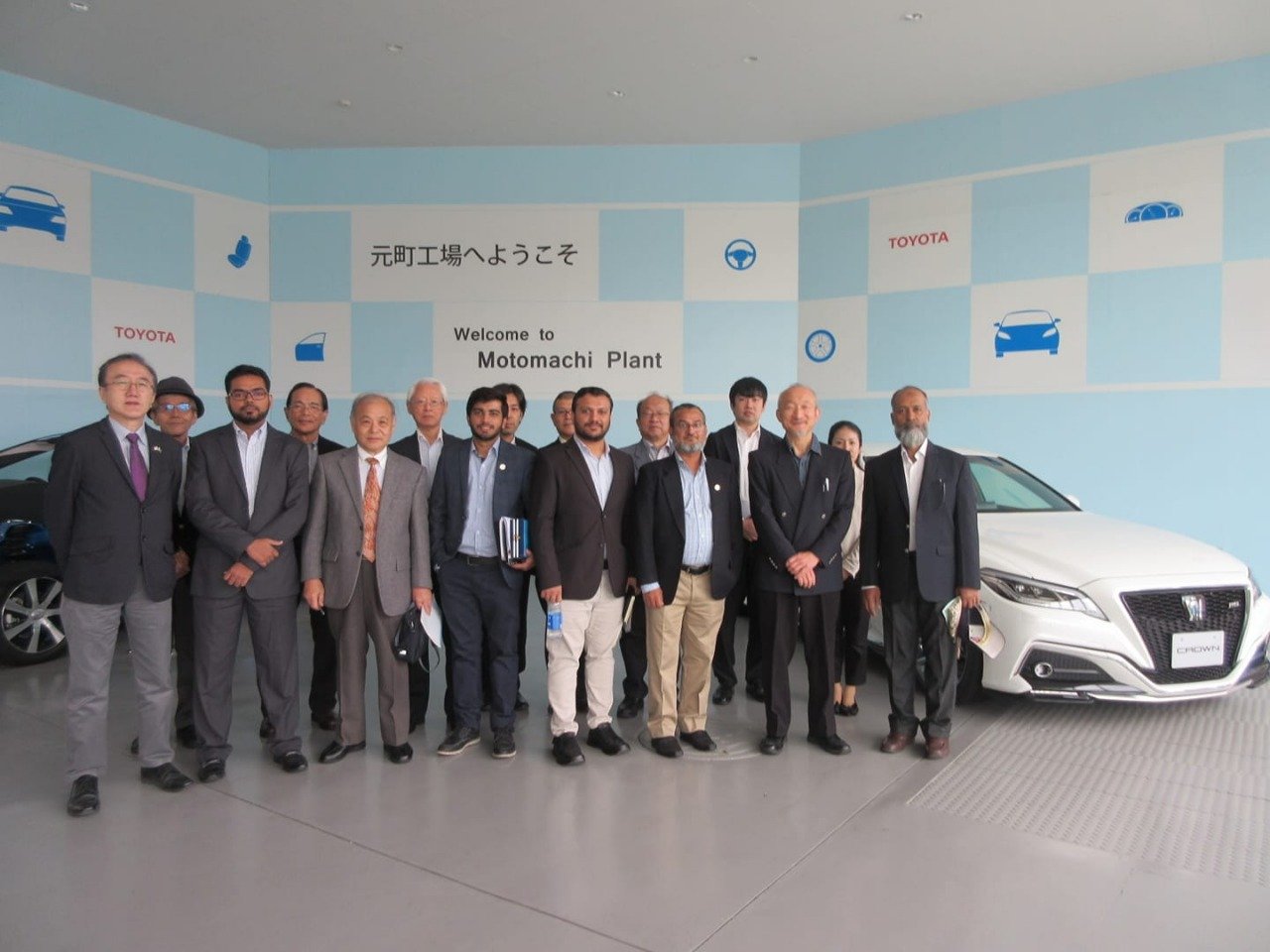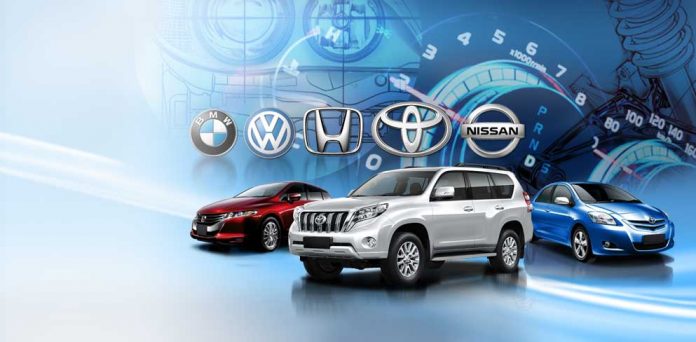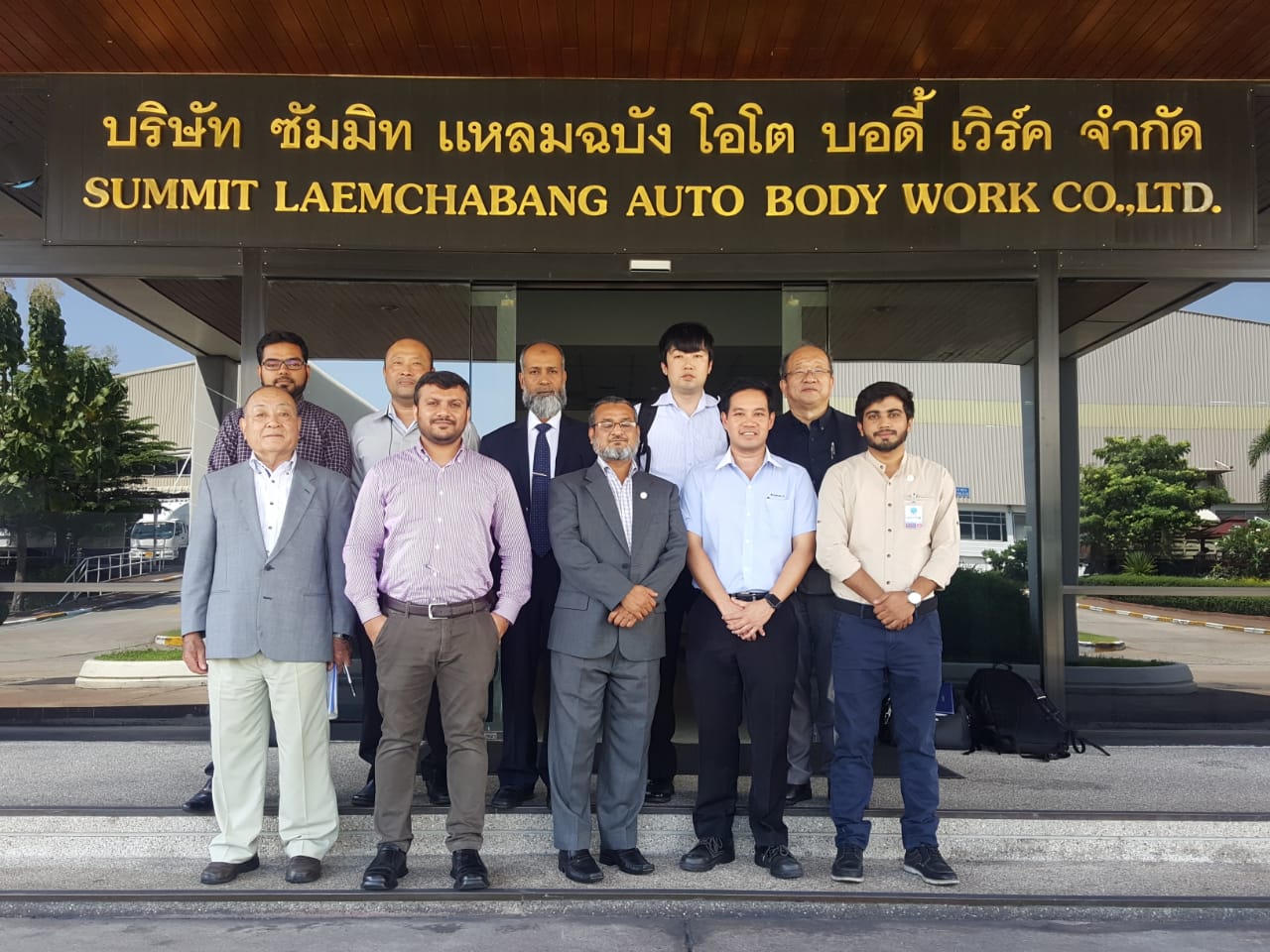At present the biggest issue in Pakistan is the balance of payment and for that purpose increase in exports is the talk of the town, in general more the exports; more prosper is the country and when we talk about automotive exports they are at very low level.
Actually when comparing to many developed countries our automotive sector is at infancy level. This sector needs more attention and consideration as the Automotive manufacturing sector is the back bone of Engineering spectrum in any country.
In Pakistan, Automobile sector is mainly lead by the Japanese manufacturers i.e. HONDA, TOYOTA, SUZUKI, YAMAHA, yet due to the implementation of Automotive Development Policy (ADP 2016 -2021) some western and Korean players along with Chinese are entering into the market but till now the Japanese Players dominate. To add here I want to mention that ADP 2016-2021 is the first ever Auto policy which is at executing stage.
Japanese Automotive Industry exists world wide e.g. in USA, Canada, India, Thailand etc. but we see that the Japanese Automotive manufacturer in Pakistan produce lesser variants with fewer features as compare to the global market, there are two main factors for that, one is the low market size (Manufacturer perspective) and the other one is lack of Interest (Consumer perspective). These factors have some solid backing but when we talk about increasing the exports we have to dig down to the core.
It is mentioned in Automotive Development Policy ADP (2016-2021) that: “It lay down a comprehensive, well-defined roadmap that aims essentially to protect the interests of the consumers and raises the safety, quality and environmental standards to meet the challenges of the highly competitive export market”.
But a part from quality, safety and good features there is a fundamental requirement which needs to be addressed and that is the localisation of predominant component of an automobile in terms of performance and cost; its the Engine along with transmission. Localisation of Engine manufacturing is a difficult job, it needs a lot of Investment and RnD.
Pakistan can learn a lot from the countries who have in recent past realized substantial growth in Automotive exports. Thailand is prime example where in early 2000s their total Automobile production is around 0.4 Million and in the year 2017 they have produced around 2.0 million automobiles amongst which they have exported nearly 1.2 million units which is the 60% of their total produce. When Thailand plans to locally manufactured the engine their policy makers impose restriction on its Localisation in 1989 at 20 percent and the ratio was set to increase to 70 percent in 1996. Because of this policy assembler could not rely on expansion of in-house production, because the domestic market of Thailand at that time was too small (Just like current situation of Pakistan) and engine manufacturing is not feasible for one supplier. Thailand made strategies to overcome its issues and some of the key strategies are to:
1. Develop and create supplier network.
2. Collaboration among assemblers, especially for the engine project.
3. Develop Thailand Automotive Institute.
To the first strategy, during the initial stage of development, the Japanese automobile
manufacturers invited their Japanese parts supplier to Thailand and locating them around their assembly plants (Automobile Industrialization and Japanese Firms in Southeast Asia, Doner 1991). This was much like the CPEC of Pakistan in which Japanese Industry massively shifted in Thailand. The collaboration among assemblers for Engine manufacturing is a key step in boosting Thai-Auto Industry. Establishment of Thailand Automotive Institute provides the essential support
mechanism for the sector and its mission is:
1. To be knowledge centre and expertise for automotive industry development
2. To support operation of organizations in testing standard, inspection and
innovation development
3. To develop human resources in automotive, auto parts and related industry
4. To expand research & development and enhance competence of entrepreneur for more productivity
5. To collaborate among organizations in Thailand and international for automotive industry development
By implementing these strategies and executing Thai-govt. policies eventually Thailand has increased its Automotive exports. Pakistan can also implement these strategies and achieve advancement in this sector, establishment of Pakistan Automotive Institute is also duly planned in Auto Development Policy (ADP 2016-2021) but till now no pertinent steps have been taken so far. This institute could be the knowledge centre and expertise for automotive industry development also it can create Research and Development culture, introduce new standards and policies in this sector.
Research and Development culture by large is missing in our country, by establishing these type of Institutes and creating collaboration among the assemblers for Engine localization we can enable local car manufacturing at low-cost and not only can help in uplifting our local Auto-Manufacturing Industry but also can increase our Automotive exports which can solve our country’s balance of payment problem.


About Writer: Mubeen Abid
Is part of a Public sector organisation. The writer is greatly involved in improving Quality and Productivity of Automotive Parts Industry, he has introduced World best practices in this sector through the Technical Support Program which has covered more than 50 Automotive parts suppliers from all over Pakistan. He has robust skills gained through strong association with many Japanese Automotive Experts and has an extensive exposure of Japanese and Thai Automotive Industry.
You can connect with the writer through His email: [email protected]

